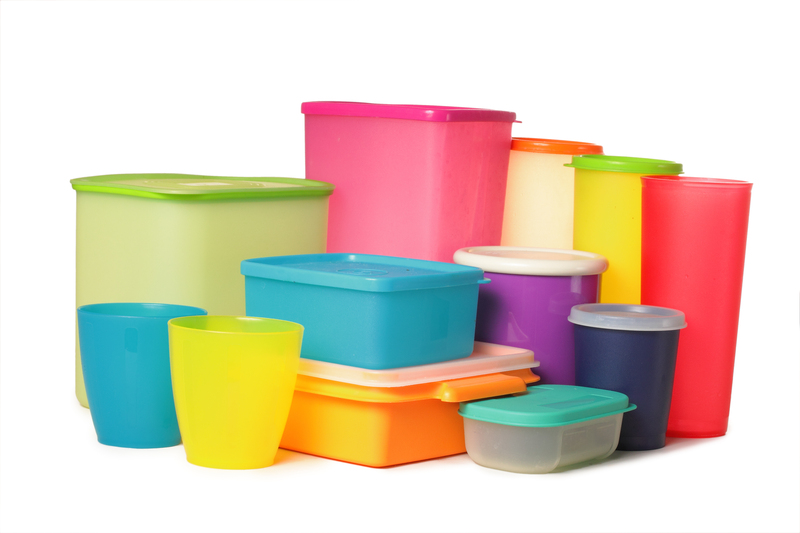How to Keep PPE Out of Landfills and Waterways: Sustainable Solutions for a Healthier Planet
The surge in demand for Personal Protective Equipment (PPE) during global health crises has underscored the critical function these products serve in safeguarding people's health. However, with the benefits come significant challenges--mainly the accumulation of PPE waste in landfills and waterways. This comprehensive guide explores how to keep PPE out of landfills and waterways, presenting actionable steps and innovative solutions to minimize environmental impact while maintaining safety.

Understanding the Problem: PPE Pollution
The Scale of PPE Waste
The extensive use of disposable masks, gloves, gowns, and face shields during pandemics and in industrial sectors has resulted in unprecedented quantities of waste. The United Nations Environment Programme estimated that global consumption of disposable masks reached an astonishing 129 billion each month at the peak of the COVID-19 pandemic. The improper disposal of these items often results in their accumulation in landfills and their eventual migration into rivers, lakes, and oceans.
- Landfills: PPE materials, mostly composed of non-biodegradable plastics like polypropylene, persist for hundreds of years without decomposing.
- Waterways: Improperly discarded PPE can be carried by wind or water runoff into rivers and oceans, posing significant threats to marine life and ecosystems.
Why Is Keeping PPE Out of Landfills and Waterways Important?
Improper disposal of PPE causes multiple environmental and health hazards:
- Wildlife threats: Animals can become entangled in masks and gloves or ingest fragments, leading to injury, suffocation, or death.
- Microplastics: Over time, PPE breaks down into tiny plastics that can enter the food chain.
- Soil and water pollution: Chemicals and microplastics leach into soil and water, harming plants, animals, and even humans.
- Overloaded landfills: The growing volume of PPE overburdens waste management systems and reduces available landfill space.
Clearly, finding ways to prevent PPE from entering landfills and waterways is paramount for environmental protection and public health.
Best Practices to Keep PPE Out of Landfills and Waterways
1. Promote Proper Segregation and Disposal
One of the most practical approaches to addressing the PPE waste problem is through awareness and proper waste handling:
- Clear labeling: Mark disposal bins with "PPE Only" signs to reduce cross-contamination.
- Separation at source: Encourage users to dispose of masks, gloves, and other PPE items in specific bins to facilitate appropriate disposal or recycling.
- Frequent collection: Increase the regularity of waste pickup, especially in public spaces, to prevent overflow and scattering by wind or rain.
- Community education: Share best practices through posters, online content, and community programs to encourage mindful disposal.
2. Understanding PPE Recycling Options
While traditional household recycling systems may not accept PPE due to contamination risks, emerging recycling solutions are changing this landscape.
- Specialized recycling programs: Some companies and initiatives (like TerraCycle) collect and process used masks and gloves from designated drop-off points.
- Mechanical recycling: Clean, single-material PPE (mainly polypropylene) can sometimes go through specialized recycling processes to be turned into raw materials for new products.
- Chemical recycling: Advanced technologies break down plastics in PPE back into basic chemicals or fuels, enabling a circular economy.
Important: Always ensure that PPE is free of hazardous contamination before considering recycling--a requirement for both human and environmental safety.
3. Opt for Reusable and Sustainable PPE Alternatives
Not all PPE is single-use. Consider these strategies to reduce reliance on disposable items:
- Reusable masks: Fabric masks made of cotton or hybrid materials offer comparable protection for the general public, especially when used and cleaned properly.
- Washable gowns and aprons: Healthcare facilities and labs can switch to garments that can be laundered and reused multiple times.
- Durable face shields: Quality face shields can be sanitized and reused, reducing overall waste output.
- Sustainable materials: Encourage manufacturers to develop products from biodegradable polymers or recycled plastics.
Adopting reusable PPE where feasible significantly reduces both landfill impact and the risk of waste ending up in waterways.
4. Establish Robust PPE Collection Initiatives
Public and private organizations can keep PPE out of oceans and landfills by collecting and managing waste efficiently:
- Collection bins: Set up clearly marked PPE disposal bins in offices, schools, transit stations, and healthcare facilities.
- Return schemes: Retailers and employers can incentivize the return of used PPE by offering discounts or rewards.
- Partnerships: Collaborate with environmental NGOs and recycling agencies to streamline collection and processing.
5. Community Clean-Up Campaigns
Actively involving the community not only removes existing litter but raises long-term environmental consciousness:
- Organize clean-ups: Coordinate local events to clean parks, rivers, and beaches.
- Raise awareness: Use social media, posters, and neighborhood meetings to inform about the dangers of PPE pollution.
- Policy advocacy: Work with local governments for stricter anti-dumping laws and better enforcement.
6. Support and Advocate for Innovation in PPE Design
Future-proofing PPE against environmental harm involves encouraging new materials and design thinking:
- Biodegradable PPE: Invest in products derived from plant-based fibers, such as bamboo or PLA, which decompose naturally.
- Compostable masks and gloves: Some startups and researchers are developing PPE that breaks down in industrial composting facilities.
- R&D support: Lobby for increased funding into alternative, eco-friendly PPE material research.
Innovative design and material choices are pivotal in reducing PPE's long-term impact on landfills and waterways.
Industry and Government Roles in PPE Waste Reduction
The Need for Policy and Regulation
Individual action, while crucial, is magnified by strong policies and industry standards:
- Mandatory programs: Some regions require the collection and safe disposal of medical PPE.
- Eco-labeling: Policies can enforce labeling requirements so consumers recognize sustainable and recyclable PPE choices.
- Funding subsidies: Governments can support local recycling programs and businesses innovating green PPE solutions.
- Extended producer responsibility: Make PPE producers accountable for end-of-life takeback and recycling.
Best Practices for Healthcare and Institutional Users
- PPE audit: Assess PPE usage patterns and identify opportunities to switch to sustainable alternatives.
- Training: Educate staff on correct disposal methods to avoid environmental contamination.
- Supplier selection: Choose vendors that provide reusable, recyclable, or compostable PPE products.
- Onsite recycling: Some larger institutions can invest in their own PPE recycling units or collaborate with local facilities.
Educating the Public: A Key Strategy
Incorporating PPE Waste Awareness into Community Programs
Public knowledge gaps often contribute to the mismanagement of PPE waste. Outreach programs should include:
- How to identify recyclable PPE
- Where to dispose of used PPE safely
- What are the environmental consequences of improper disposal?
- Home and workplace mandates: Simple policies--like always cutting ear loops before trashing masks to protect wildlife--can have outsized effects.
School and Youth Engagement
- Lesson plans: Integrate PPE pollution topics into science and social studies classes.
- Youth-led initiatives: Empower young people to lead local clean-up events or recycling drives.
The Future of PPE Waste Management
Looking ahead, the evolution of personal protective equipment should align with sustainable development goals:
- Circular economy models: Develop closed-loop systems where used PPE becomes a resource for new products.
- Zero-waste goals: Industries and institutions aim for "zero PPE to landfill" benchmarks through reusability, composting, and smart procurement.
- Smart tracking: Use technologies like QR codes so users can check where to dispose of or recycle specific PPE items.

Actionable Tips: How to Stop PPE Waste from Polluting Our Earth
- Always dispose of PPE properly--never litter masks or gloves outdoors.
- Use reusable PPE where appropriate and maintain it according to guidelines.
- Find and use local PPE recycling services if available.
- Support brands and governments pushing for sustainable PPE policies.
- Encourage your workplace or school to adopt eco-friendly PPE procurement and management.
By following these steps, you contribute to a cleaner, safer, and more sustainable future for every community.
Conclusion: Every Step Counts in Keeping PPE Out of Landfills and Waterways
We all rely on PPE for safety and health. However, by learning how to keep PPE out of landfills and waterways--through responsible use, effective disposal, innovative recycling, and ongoing education--we can minimize environmental harm and pave the way for a more eco-friendly future.
Adopting these best practices on an individual and organizational scale not only protects our planet but also ensures that future generations can enjoy clean water, unpolluted land, and thriving natural habitats. Together, we can make a meaningful difference in combating the PPE pollution crisis.
